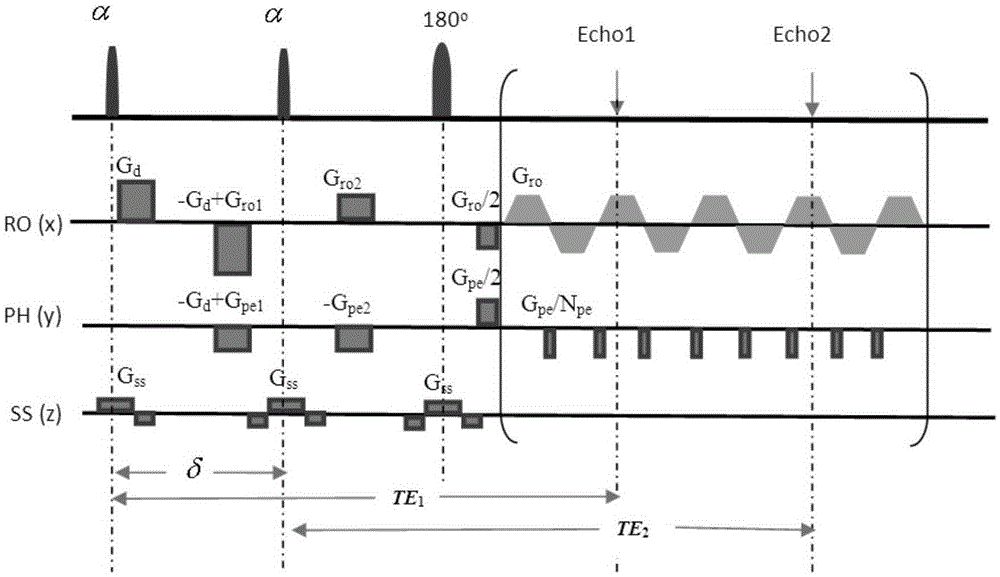Single-scanning quantitative magnetic resonance diffusion imaging method based on dual echoes
A technology of magnetic resonance imaging and imaging methods, which is applied in the directions of diagnostic recording/measurement, medical science, sensors, etc., can solve the problems of increasing time and signal attenuation, the effect is not good enough, and the imaging efficiency is not greatly improved.
- Summary
- Abstract
- Description
- Claims
- Application Information
AI Technical Summary
Problems solved by technology
Method used
Image
Examples
specific Embodiment
[0060] The feasibility of the present invention is verified by a simulation model experiment based on a double-echo single-scan quantitative magnetic resonance diffusion imaging (DM-OLED) method. Before the experiment, use matlab to generate eight circle models. The model includes ADC, T2, T1, and proton density model. The ADC and T2 values of the eight circles are different, ADC=0.67e-9~4.4e-9s / m 2 , T2=0.08~0.1s, T1=1s, this group of T1 and T2 is equivalent to the ratio of T1 and T2 of human tissue under the magnetic field of 3T. Use the ADC model as a reference.
[0061] Simulation steps:
[0062] 1. Set the size of the imaging field (FOV), the imaging field of view FOV in the x direction x 60mm, the imaging field of view FOV in the y direction y is 60mm. Add model files to the appeal;
[0063] 2. Calculate the sequence parameters. The test parameters of the present embodiment are set as follows: the excitation time of the 45° excitation pulse is 3 milliseconds, an...
PUM
 Login to View More
Login to View More Abstract
Description
Claims
Application Information
 Login to View More
Login to View More - R&D
- Intellectual Property
- Life Sciences
- Materials
- Tech Scout
- Unparalleled Data Quality
- Higher Quality Content
- 60% Fewer Hallucinations
Browse by: Latest US Patents, China's latest patents, Technical Efficacy Thesaurus, Application Domain, Technology Topic, Popular Technical Reports.
© 2025 PatSnap. All rights reserved.Legal|Privacy policy|Modern Slavery Act Transparency Statement|Sitemap|About US| Contact US: help@patsnap.com



